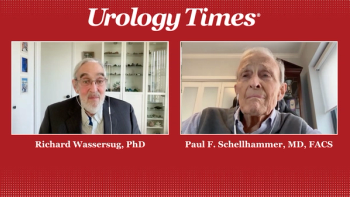
Dr. Mouw on next steps with ADC combinations in bladder cancer
“In the preclinical space, we continue to be interested in trying to understand the mechanistic underpinnings of these combination therapies,” says Kent W. Mouw, MD, PhD.
In this video, Kent W. Mouw, MD, PhD, discusses the implications and potential future work based on the publication, “Activity of enfortumab vedotin and sacituzumab govitecan with radiation in preclinical models of bladder cancer,” for which he served as the senior author. Mouw is an assistant professor of radiation oncology at Dana-Farber Cancer Institute and Brigham and Women's Hospital in Boston, Massachusetts.
Video Transcript:
What are the implications of these findings for the bladder cancer space?
I think that as [antibody drug conjugates] (ADCs) continue to gain ground and their use continues to expand in bladder cancer, one of the natural questions and particularly for me as a radiation oncologist is, can we use these most active systemic agents in combination with radiation to try to improve bladder-sparing therapy for patients with muscle invasive disease? That, I think, is where the excitement is here. Our data provides at least some preclinical rationale for attempts to try to combine those ADCs with radiation. I know there are several early phase clinical trials already in conception, some of them are open already, that are investigating these combinations. I'm excited to see what the activity profile of those combinations looks like in this patient population.
Is there any future work planned with this study?
In the preclinical space, we continue to be interested in trying to understand the mechanistic underpinnings of these combination therapies. The recent EV-302 data showed that enfortumab vedotin combined with pembrolizumab was active in the first-line setting. The work that was published in our paper recently didn't include any attempt to model the immune system. Moving forward, we're interested in studying the activity of these ADCs with perhaps immune checkpoint blockade in combination with radiation, because I think that's a natural next question to try to address. What role, if any, is the immune system playing here? And can we further optimize responses by co-targeting immune checkpoint signaling in addition to the radiation of the ADCs?
This transcription has been edited for clarity.
Newsletter
Stay current with the latest urology news and practice-changing insights — sign up now for the essential updates every urologist needs.



















